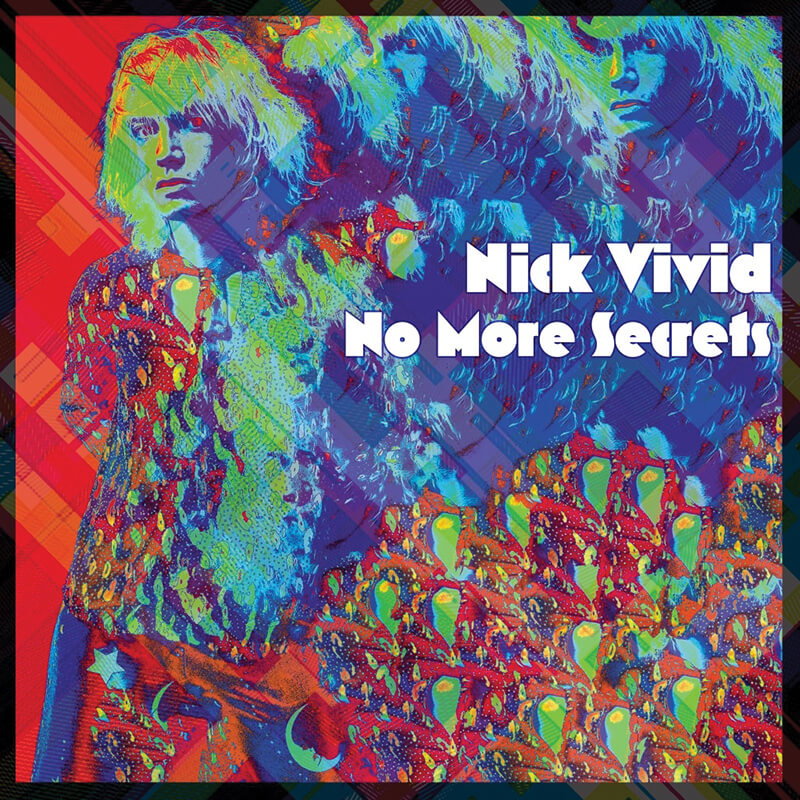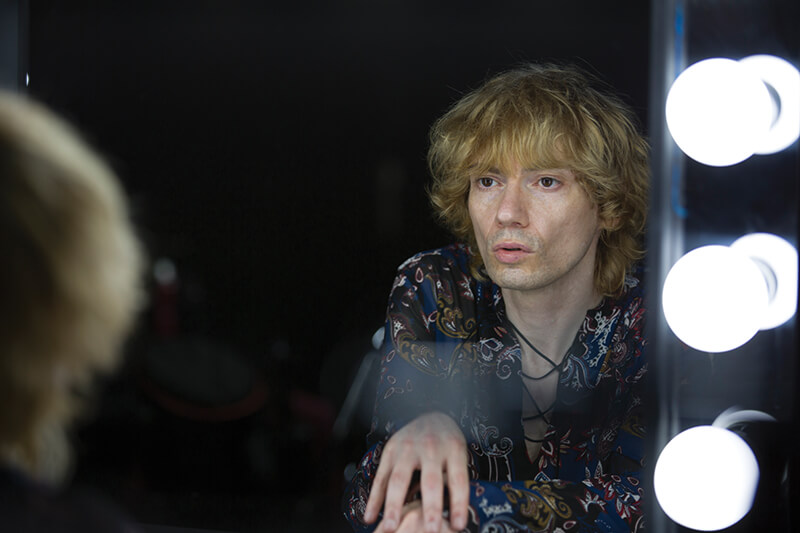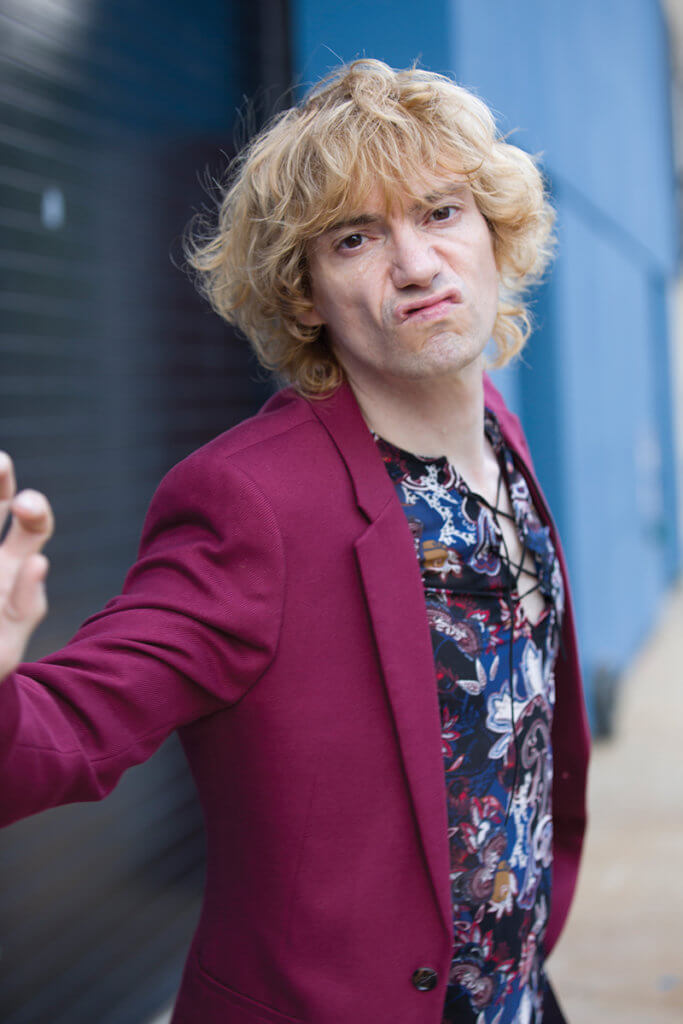Editor’s note — we recently asked New York indie artist Nick Vivid to give the mag an exclusive look inside his brain, to learn just how the creative process of one of today’s most unique, contemporary artists works. We hope you enjoy…
On my writing process:
Since I was a little kid, I was always hearing songs that didn’t exist in my head. To this day it works the same way – I hear the full production – verses, choruses, harmonies, guitar tones, keyboard sounds, etc. So that’s been kinda haunting me my whole life. I usually hum enough of an idea into my phone’s recorder so I can jog my memory with it later. Then when it comes time to make a new album I go through those ideas and see which ones still retain the initial spark. Some ideas seem great at first, but don’t seem so hot months later. Another method of writing is by looking for keyboard sounds or guitar chord structures or chops of loops that inspire me. It’s gotta have a “feel” to it. It’s gotta have something a little unique or, at least a little weird, going for it. Otherwise, it doesn’t make the final cut. It typically takes me about 100-150 ideas before I feel I have enough for an album.
On the creation of No More Secrets:
After the “Blissed Out” tour ended in 2019, I got a new apartment in Queens. So, I built a hybrid analog / digital studio in early 2020. I planned to write and record 24×7 for a few months, have a new album out in September, and be back on the road. Easy, right? Well, the pandemic hit so obviously part of that plan got wiped out. But the studio got built. So, I had the luxury of letting this album grow at its own pace – the complete opposite of how I originally planned it. I still allowed myself to be available for it 24×7, but I let go of the pressure to make something happen. And there were plenty of days where it felt like nothing was happening. I didn’t get down on myself for having those days this time around. A good lesson learned – sometimes things work out if you let them and give them enough time.

On the recording techniques used for No More Secrets:
As a solo electronic lo-fi artist, I have too many choices for keyboard sounds, bass sounds, thousands of kicks and snares. But I know what I like to hear so luckily that narrows it down. For instance, the kicks and snares have to have what I call the “Blue Sound,” which usually emphasizes the 700Hz and 1.4KHz side of things. I’m still chasing my perfect vision of that sound. My Helios Type 69 preamps are my favorite. About 10 years ago I put together a small pile of albums I loved the sound of and wanted to “copy” as it were, and oddly enough they were all done on the same console – the Helios.

On the new album I exclusively used 1176 and La2a compressor samples through a VST called Nebula for my vocals. I’ve never had a better vocal sound. Nothing comes close to Nebula in the plugin world. I pulled my old Yamaha 24-channel console out of storage, restored it with new caps and op-amps, and used that as a summing mixer. The mixes got sent to my early-1970s Revox A77 tape machine. I used new-old-stock Quantegy 456 tape. That formula of tape hasn’t been made in 20 years, but it’s my favorite and luckily you can still find it out there.
On producing my own albums:
I’m a big fan of the entire recording process. The studio is my lab and I usually have a very clear vision of where I want things to go. The only other person I bring into the fold is my mastering engineer, Dan Millice. He’s the only one I trust to get it ready for the world. He’s got a great natural sense of that “Blue Sound” midrange that I like and we are both fans of the same mastering engineers for the same reasons. He’s really known for a lot of modern NYC hip-hop stuff. I go for real vintage vibey sounds. Dan makes it so my ideas can work alongside everything else out there in the current market.

My views on image and style vs. musical substance:
When I was a teenager, I was writing music that was relatively uninteresting because I was still living in and influenced by a small-town environment and oppressive family life. So, it was really me who was uninteresting. You can’t sing about what you don’t know. So, one of my main goals in moving to New York City was to become more worldly and give myself a larger palette of cultural influence to not only draw from creatively, but to use to define who I was. Not only did that experience make my writing better over the years, but it made me better. And as a result, my visual style got funkier. My creative choices in life as a general rule became less traditional. It has to look like how it sounds, or it doesn’t hold up as far as I’m concerned.

On the use of vintage computers to make the “Trainers” lyric video:
I was a nerdy kid and loved computers. I was a big fan of the “cracking” groups that would graffiti their own intros during the loading screens of games they pirated to spread all over the world – “This game brought to you by THE BANDIT” – that kind of thing. Like, who is this Bandit guy? There was a mystique to it. It was underground, illegal, and brimming with artistry. My first taste of anti-authoritarian counterculture, really. It left a big impression on me, and I thought it would be fun to incorporate some of that influence from my childhood into the video. Plus, the song title “Trainers” comes from the term for “Unlimited Lives” in video games, so it was a no-brainer to dust off some old coding skills and create the lyric video entirely on an old Commodore 64.
Follow on Instagram @nickvivid
Photos by Geoff Hug
